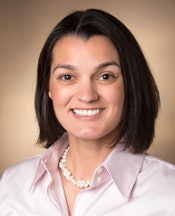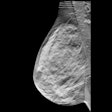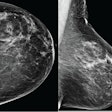
Connecticut passed the first breast tissue density notification law seven years ago. Now 28 states have enacted similar legislation, mandating that women be informed if they have dense tissue. But even if women understand the content of notification letters, do they know what to do next? Not necessarily, according to a talk given at the RSNA 2016 meeting in Chicago.
 Dr. Lucy Spalluto of Vanderbilt University Medical Center.
Dr. Lucy Spalluto of Vanderbilt University Medical Center.There's been research about whether these density notification letters are understandable, but not as much about how patients respond, said presenter Dr. Lucy Spalluto of Vanderbilt University Medical Center in Nashville, TN. And knowing how patients respond could be key to helping them stay committed to breast cancer screening.
"Past studies have assessed the reading level required to understand the letters," she told session attendees. "But we need to also know how patients respond, what they think after they've received the letter."
Clear as mud?
Spalluto and colleagues invited 1,924 women identified via MyResearch to take an anonymous, web-based survey. The women had undergone screening mammography between January 2014 and November 2015.
The survey included four areas of inquiry: demographics, understanding exam results, preference of result reporting, and understanding the role of the radiologist. Of the women invited, 910 participated, for a response rate of 47.2%.
Most women (95%) said that the state-mandated language adequately informed them that they had dense tissue, and they understood that dense tissue could negatively affect mammography interpretation. But the women were unsure about what to do next, Spalluto said. Of survey participants, 42% didn't think the state-mandated letter sufficiently informed them about what to do if they have dense tissue, and 82% did not think that the letter adequately informed women about additional screening options available to patients with dense tissue.
"How should I proceed?" one survey participant asked. "Do I schedule a follow-up with my doctor? Do I need to act on this now, or is it OK to wait until my next scheduled appointment?"
Also, as part of the survey, Spalluto and colleagues assessed women's understanding of the radiologist's role in breast imaging. Most women (83%) understood that radiologists were doctors and that becoming a radiologist required extensive postgraduate training. In addition, 59% of survey participants understood that radiologists perform minimally invasive procedures such as breast biopsies.
"Since we had a captive audience, we tried to get a sense of what patients know about radiologists and their role in breast imaging," Spalluto told AuntMinnie.com. "We wanted to assess whether patients knew that we are highly trained and that we also perform many of the procedures, rather than a surgeon."
Giving guidance
The study's limitations include its small size and a preponderance of educated participants, with 32% of respondents having a bachelor's degree, and 38% having a graduate or professional degree, according to Spalluto.
"This research gives us preliminary information on a single state, but we need to move forward with further studies that have a larger, more diverse population," she said.
In any case, women might understand that they have dense breast tissue from their state's notification letter, but they need more concrete support, Spalluto told AuntMinnie.com.
"They get all this information, but don't know what to do next," she said. "We need to give them more guidance."




















